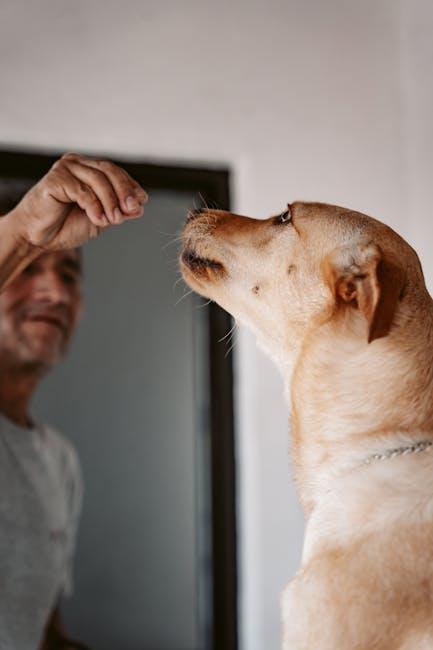In the heart of every home, furniture serves as both a functional necessity and a cherished part of our personal sanctuary. Yet, for pet owners, maintaining the pristine condition of these beloved pieces can sometimes feel like a daunting challenge. Whether it’s a playful puppy with a penchant for chewing or a curious cat with a love for scratching, our furry companions often view furniture as a playground rather than a place to respect. But fear not, fellow pet enthusiasts, for there is a gentle path to harmony! In this guide, we will explore a warm and compassionate training approach that not only encourages your pet to respect furniture but also strengthens the bond you share. By focusing on understanding and communication, you can create a peaceful coexistence where both your furniture and your furry friend can thrive.
Understanding Your Pets Perspective on Furniture
Our beloved pets often view furniture not as a collection of decorative pieces but as an extension of their playground or resting spot. Understanding this perspective can make a significant difference in how we approach training. To our furry companions, a couch might be the perfect place to observe the world, while a dining table could seem like an enticing perch. Recognizing these instincts helps us address their behavior more empathetically.
To guide your pet toward respecting furniture, consider these strategies:
- Provide Alternatives: Offer cozy beds or designated resting areas to divert their attention from your favorite chair.
- Positive Reinforcement: Use treats and affection to reward your pet when they choose their designated spot over the furniture.
- Set Boundaries: Consistently guide your pet off furniture and redirect them to their own space, reinforcing boundaries with gentle persistence.
- Engage Their Minds: Keep your pet entertained with toys and activities to reduce the temptation to explore furniture.
By respecting their natural instincts while setting clear boundaries, we can foster an environment of mutual respect and comfort for both you and your pet.

Creating a Cozy and Inviting Pet Space
Transforming a corner of your home into a sanctuary for your furry friend can be a delightful project. Begin by selecting a quiet and comfortable area, ensuring it’s away from high-traffic zones to give your pet a sense of security. Layer soft textures like plush blankets and cushions to create a warm, inviting space. Consider adding a small pet bed or a cozy crate, which can serve as a retreat for relaxation.
Incorporate your pet’s favorite toys and a scratching post or chew toy to keep them entertained and engaged. A few tips to enhance the coziness include:
- Use natural light: Position the pet space near a window to let in sunlight, creating a soothing environment.
- Add personal touches: Include items that carry your scent, such as an old t-shirt, to make your pet feel connected to you even when you’re not around.
- Maintain cleanliness: Regularly clean and refresh the area to ensure it remains a pleasant place for your pet.
By crafting a dedicated space with love and care, you can guide your pet to feel at home, ultimately encouraging them to respect the rest of your living area.

Positive Reinforcement Techniques for Lasting Respect
To foster a lasting bond of respect between your pet and your cherished furniture, it is essential to employ positive reinforcement techniques that are both effective and nurturing. These techniques not only guide your pet but also strengthen your relationship, creating a harmonious home environment. Begin by identifying behaviors you wish to encourage, such as staying off the couch or using a designated scratching post. Once these behaviors are clear, you can employ the following strategies:
- Consistency is Key: Ensure everyone in the household is on the same page about the rules and rewards. Consistent responses help your pet understand expectations clearly.
- Immediate Rewards: As soon as your pet exhibits the desired behavior, offer a treat, affection, or verbal praise. This immediate positive feedback helps reinforce the behavior effectively.
- Redirection: If your pet shows interest in furniture, gently redirect them to an appropriate alternative, like a pet bed or toy, and reward them for using it.
- Patience and Understanding: Remember, learning takes time. Be patient and understanding as your pet adapts to the new rules. Celebrate small victories along the way.
By integrating these gentle and affirmative techniques into your training routine, you cultivate an environment of mutual respect and trust, ensuring your furniture remains pristine while your pet feels loved and secure.

Maintaining Consistency with Love and Patience
Training your beloved pet to respect your furniture is not just about setting boundaries but also about nurturing a relationship built on trust and understanding. It’s essential to approach this journey with a heart full of love and patience. When your pet jumps on the couch or scratches the chair, remember that these behaviors are often expressions of their natural instincts. Instead of reacting with frustration, try to understand the underlying needs. Perhaps your furry friend is seeking comfort or looking for a place to play.
- Positive Reinforcement: Reward your pet with treats or affection when they choose their designated area over your furniture.
- Consistent Commands: Use the same words and tone to guide them, ensuring they understand what is expected.
- Gentle Redirection: If you catch them in the act, calmly redirect them to their spot, offering a toy or a treat as a distraction.
With a consistent and warm approach, you’ll not only protect your furniture but also strengthen the bond with your pet, creating a harmonious home environment for everyone.

